Dendrosenecio kilimanjari is a fascinating species of giant groundsel found exclusively on Mount Kilimanjaro in Tanzania, thriving at altitudes between 14,000 to 16,000 feet (4,300 to 5,000 meters). Known as the Kilimanjaro giant groundsel, this plant is scientifically named Dendrosenecio kilimanjari. Over time, it has also been referred to as Senecio kilimanjari before its reclassification into the Dendrosenecio genus, reflecting its unique evolutionary path.
Physical Description: This species stands out with its height reaching up to 10 meters (32 feet), featuring a robust stem topped with a crown of green leaves. Its appearance makes it a semi-official emblem of Kilimanjaro, often captured in photographs by trekkers.
Dendrosenecio kilimanjari is exclusively found on the slopes of Mount Kilimanjaro making it an endemic plant, thriving between 2,800 to 4,000 meters above sea level. This plant’s presence underscores the mountain’s unique biodiversity.
The plant’s evolution has perfectly suited it for the extreme conditions of high altitudes, showcasing nature’s adaptability in harsh environments.
For those interested in learning more about Kilimanjaro’s flora, “Adventure Tourism: Environmental Impacts and Management” by David Huddart and Tim Stott, and “Alpine Plant Life” by Christian Körner provide detailed insights into the ecological aspects of such environments.
- Evolution and Taxonomy: Originally classified under the genus Senecio, it was reclassified into the new genus Dendrosenecio due to its distinct characteristics. This plant evolved from a common groundsel about a million years ago, adapting to the harsh alpine conditions of Kilimanjaro through a process of adaptive radiation. This evolution showcases how isolation on ‘sky islands’ like Kilimanjaro can lead to significant species divergence.
- Physical Characteristics:
- Appearance: Dendrosenecio kilimanjari resembles a mix between a cactus and a pineapple, with a thick, upright stem and a crown of sturdy green leaves at the top. This unique structure helps in water retention and protection against cold.
- Size: These plants can grow up to 30 feet (9 meters) tall, though most are between 2 to 3 meters. Their growth is incredibly slow, averaging 3-5 cm per year, indicating they might be centuries old.
- Adaptations:
- Water Storage: The pith of the stem stores water, which also acts as an antifreeze, preventing cell damage from freezing temperatures.
- Leaf Rosettes: The leaves form rosettes around an apical bud, reducing heat loss and protecting vital growth points.
- Nyctinastic Movement: The leaves close when temperatures drop, further conserving heat.
- Ecological Role and Habitat: Found in the moorland and lower alpine zones of Kilimanjaro, these plants are crucial for the ecosystem, contributing to soil stability and biodiversity. They are often seen around landmarks like the Lava Tower, adding to the surreal landscape of the mountain.
- Cultural and Scientific Interest: Dendrosenecio kilimanjari is not just a botanical wonder but also a symbol of Kilimanjaro’s unique biodiversity. Its presence on treks, especially near acclimatization points like Horombo Camp, makes it a notable feature for climbers, highlighting the mountain’s ecological diversity.
- Conservation Concerns: With increasing trekking activities, there’s a risk of damage to these slow-growing plants. Responsible trekking practices are essential to preserve this and other endemic species.
This plant’s existence on Kilimanjaro underscores the mountain’s role as a biodiversity hotspot, where extreme conditions have fostered unique evolutionary paths, making Dendrosenecio kilimanjari a living testament to nature’s adaptability and resilience.
How tall do giant groundsels grow?
Giant groundsels, known scientifically as Dendrosenecio, grow at a very slow rate of about 3-5 cm per year due to the harsh mountain conditions on Mount Kilimanjaro. Despite this, some can reach impressive heights of up to 10 meters, though most are typically between 2-3 meters tall, roughly twice the height of an average person.
Historical Presence on Kilimanjaro
These plants have been a part of the Kilimanjaro landscape for centuries, likely existing since before the first recorded summit by Hans Meyer in 1889. Their longevity and slow growth mean that the flora observed today might be similar to what Meyer saw.
Environmental Indicators
The presence of light grayish-green lichens on Dendrosenecio indicates the clean, high-altitude air of Mount Kilimanjaro. These lichens thrive only in unpolluted environments, serving as a natural marker of the mountain’s pristine conditions.
Relation to Common Groundsel
Despite their impressive size, giant groundsels are surprisingly related to the much smaller common groundsel, found widely in East Africa and beyond, showcasing a fascinating example of adaptive evolution.
Zones of Growth on Kilimanjaro
- Cultivated Zone (below 1,800 meters): Here, you’ll find agricultural activities but no giant groundsels.
- Montane Forest Zone (1,800 – 2,800 meters): This zone features dense forests but is below the altitude where giant groundsels typically thrive.
- Moorland Zone (2,800 – 4,000 meters): This is where giant groundsels are commonly found, alongside other unique flora adapted to the open, windy conditions.
- Low Alpine Zone (4,000 – 5,000 meters): Here, vegetation is sparse, but you might still spot some hardy plants like the giant groundsel at the lower end of this zone.
- Summit Zone (above 5,000 meters): Too extreme for most plant life, including giant groundsels.
Why Below 4,000 Meters?
Giant groundsels thrive where moisture is sufficient, thanks to the regular precipitation from the Indian Ocean’s moist air rising over Kilimanjaro. This climate is ideal in the moorland and lower alpine zones.
Routes to See Giant Groundsels
Here are the specific routes and points along those routes where you can observe these remarkable plants:
1. Lemosho Route
- Visibility: Giant Groundsels can be seen on the third day of the trek.
- Location: Between Shira 2 Camp and Barranco Camp.
- As trekkers move from the Shira Plateau towards the Barranco Valley, they will pass through areas where Giant Groundsels stand tall, providing a dramatic and almost prehistoric landscape. The path winds through moorland zones where these unique plants are a common sight.
2. Machame Route
- Visibility: Seen on the third day of the journey.
- Location: From Shira Camp to Barranco Camp.
- Similar to the Lemosho Route, the Machame Route also provides views of Giant Groundsels on the third day. Trekkers will pass through the moorland and alpine desert zones, where these plants are abundant, especially near the Barranco Valley. The sight of Giant Groundsels against the backdrop of the mountain’s slopes is a highlight of this route.
3. Marangu Route
- Visibility: Giant Groundsels are observable near Horombo Camp.
- Location: This route offers views of Giant Groundsels on both the ascent to and descent from Kibo Hut.
- The Marangu Route, also known as the “Coca-Cola” route, is one of the most popular routes on Kilimanjaro. Trekkers can see Giant Groundsels near Horombo Camp, which is situated in the moorland zone. This route provides an opportunity to observe these plants both while ascending to higher altitudes and when descending, giving trekkers ample time to appreciate their unique characteristics.
Absence of Giant Groundsels on Northern Slopes
The northern routes like Rongai and Northern Circuit see less rainfall, making conditions too dry for giant groundsels, which prefer a more humid environment.
Survival Adaptations
- Insulation: Dead leaves form an insulating layer around the stem.
- Water Storage: The stem stores water, helping the plant survive dry spells.
- Vertical Growth: Minimizes exposure to cold while maximizing sunlight absorption.
- Symbiotic Relationships: Lichens on the plant help retain moisture.
These adaptations allow giant groundsels to not only survive but thrive in the challenging conditions of Mount Kilimanjaro, making them a remarkable example of nature’s resilience.
Additional information
| Habitat | Heath & Moorland Zone |
|---|

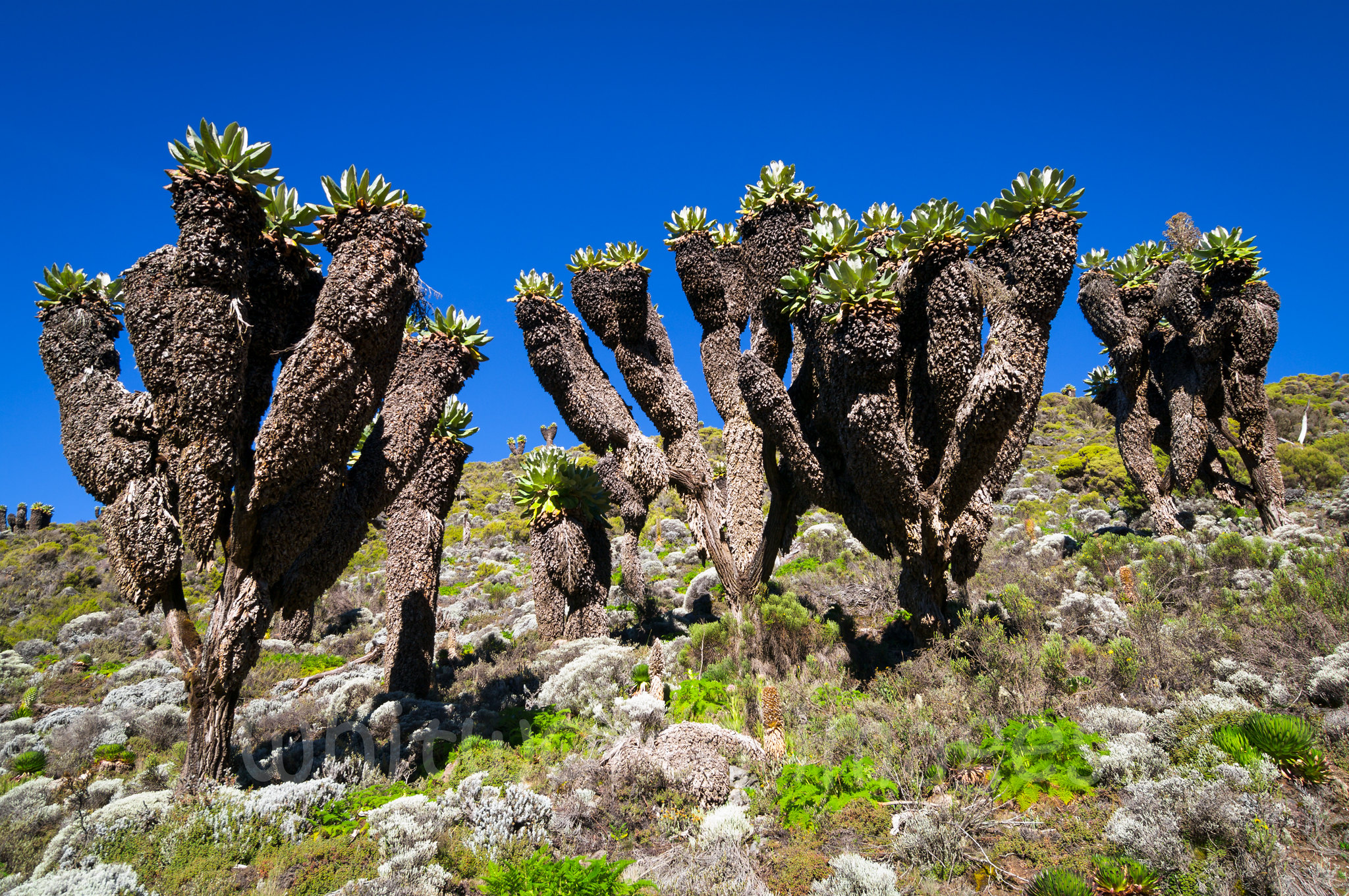
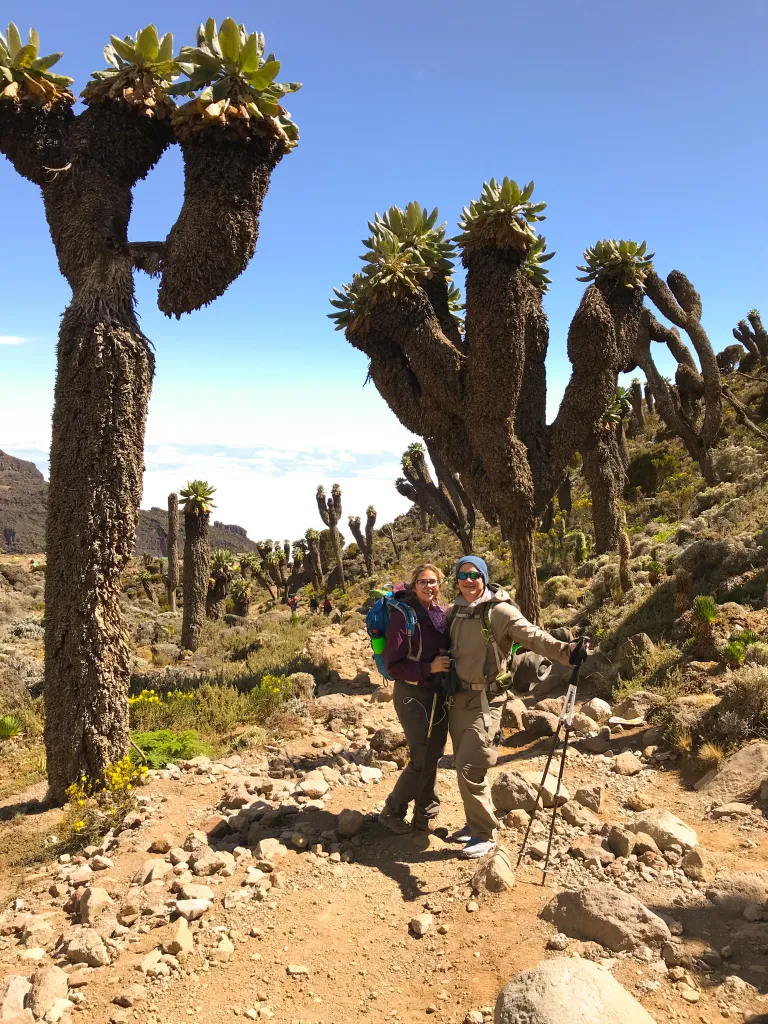
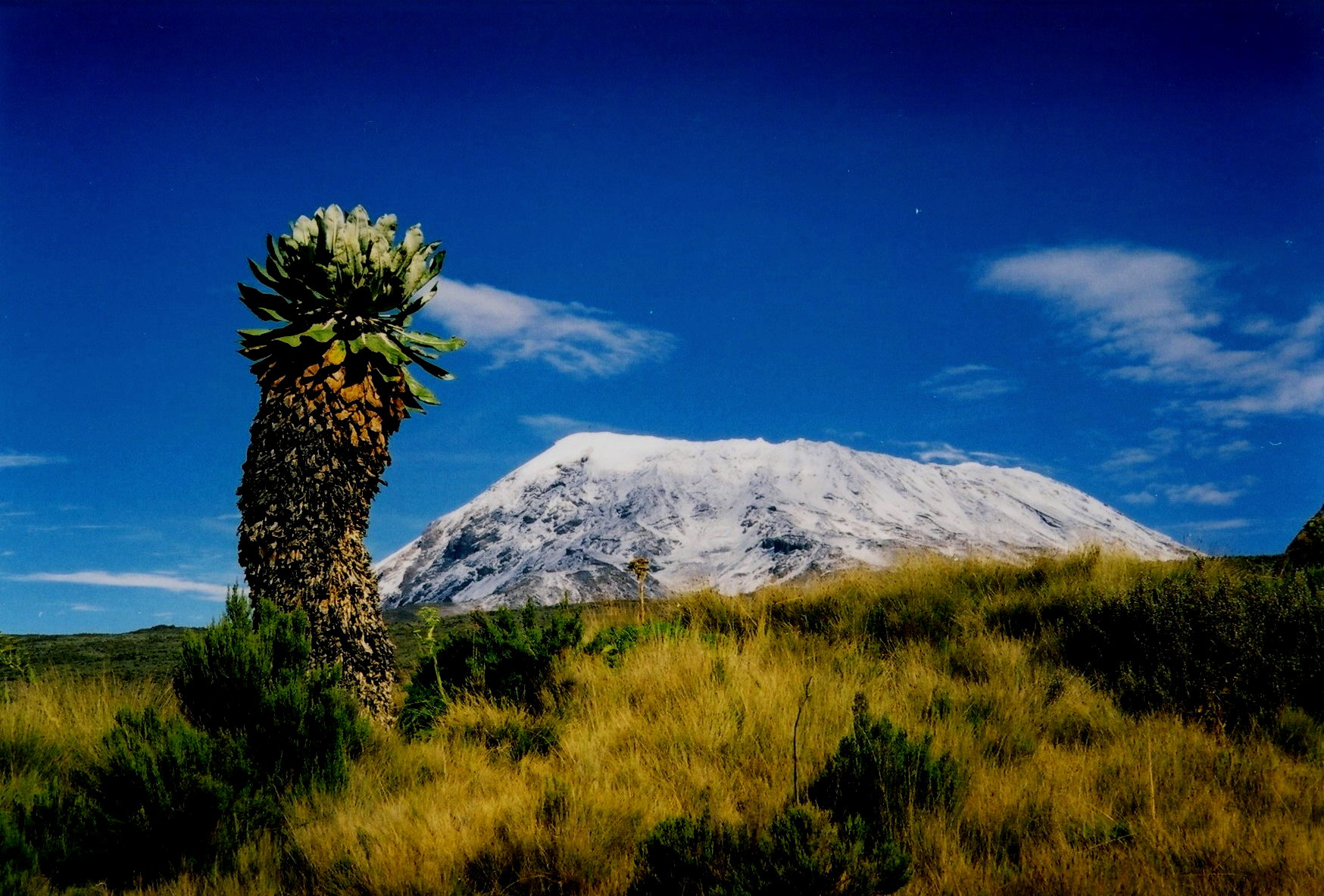
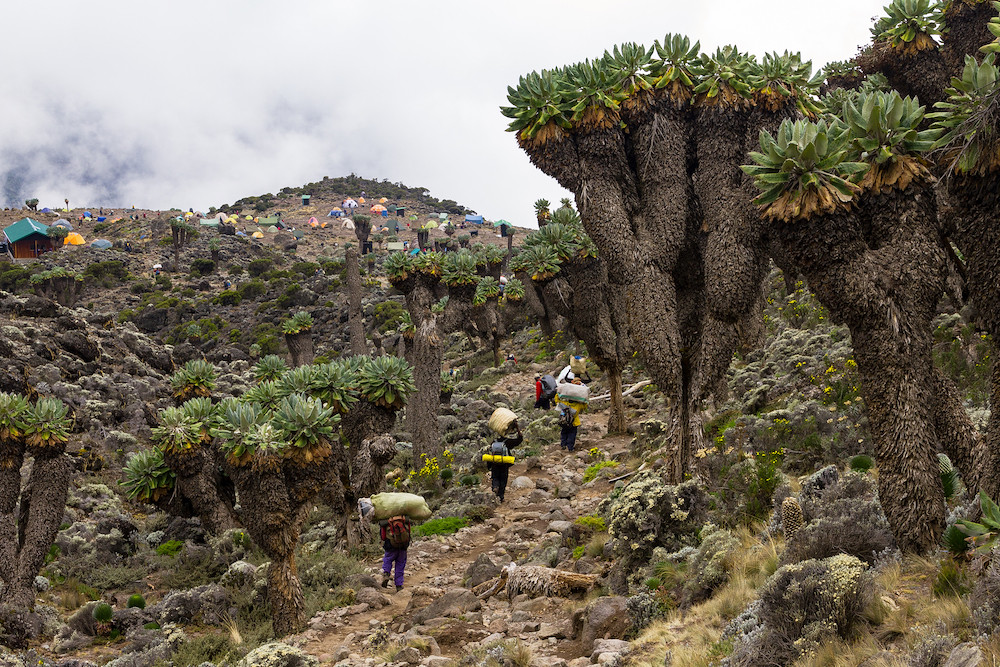
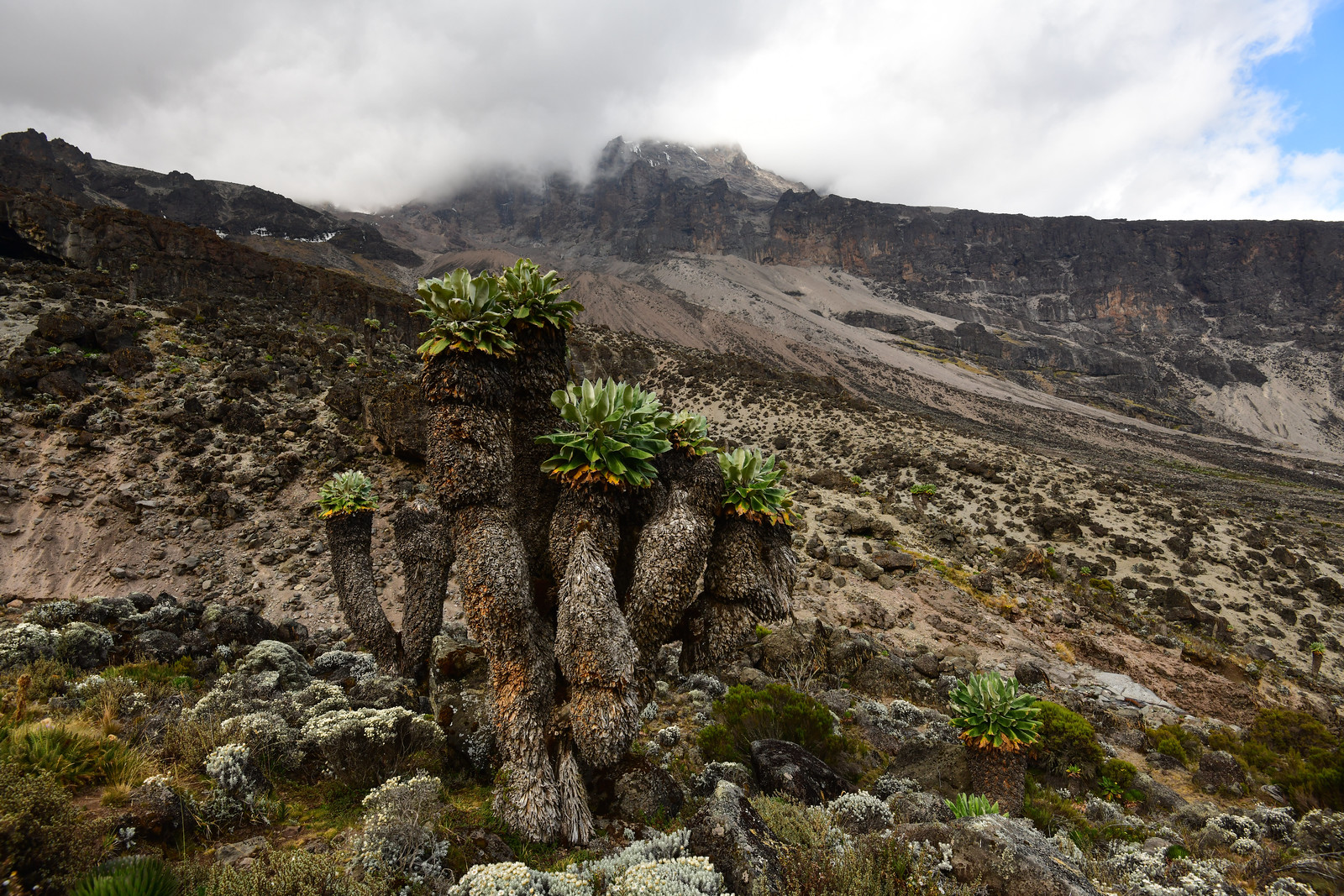
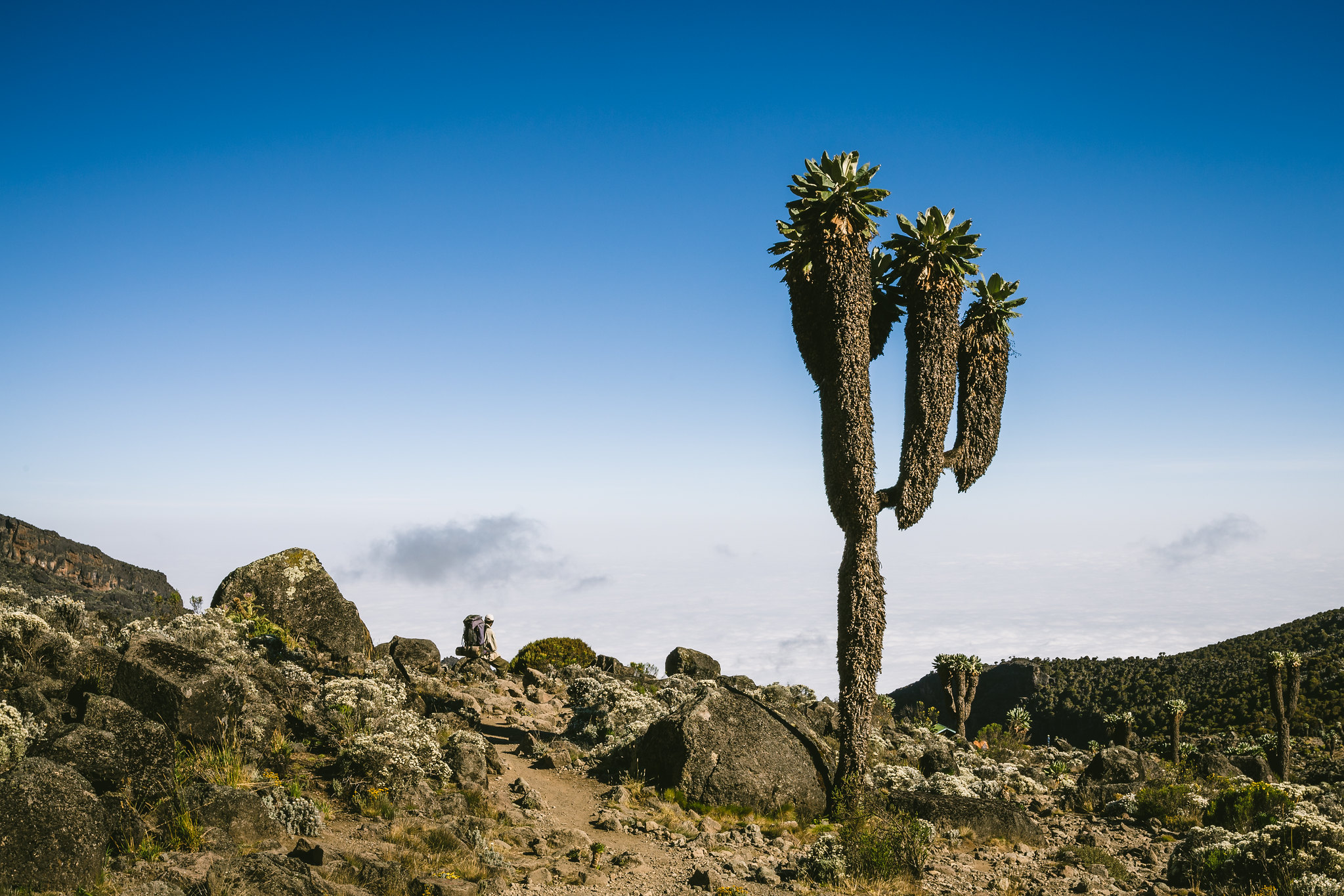
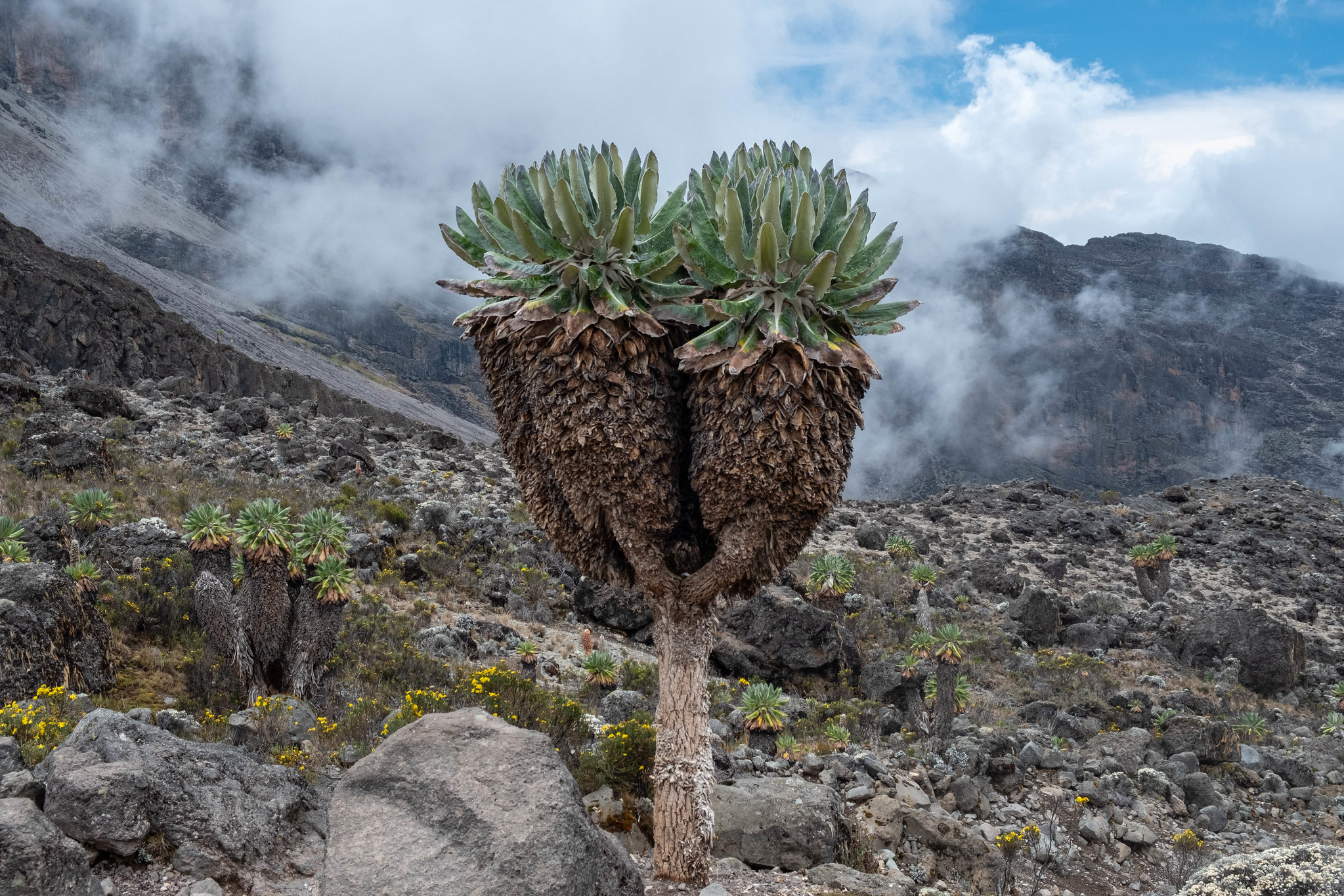
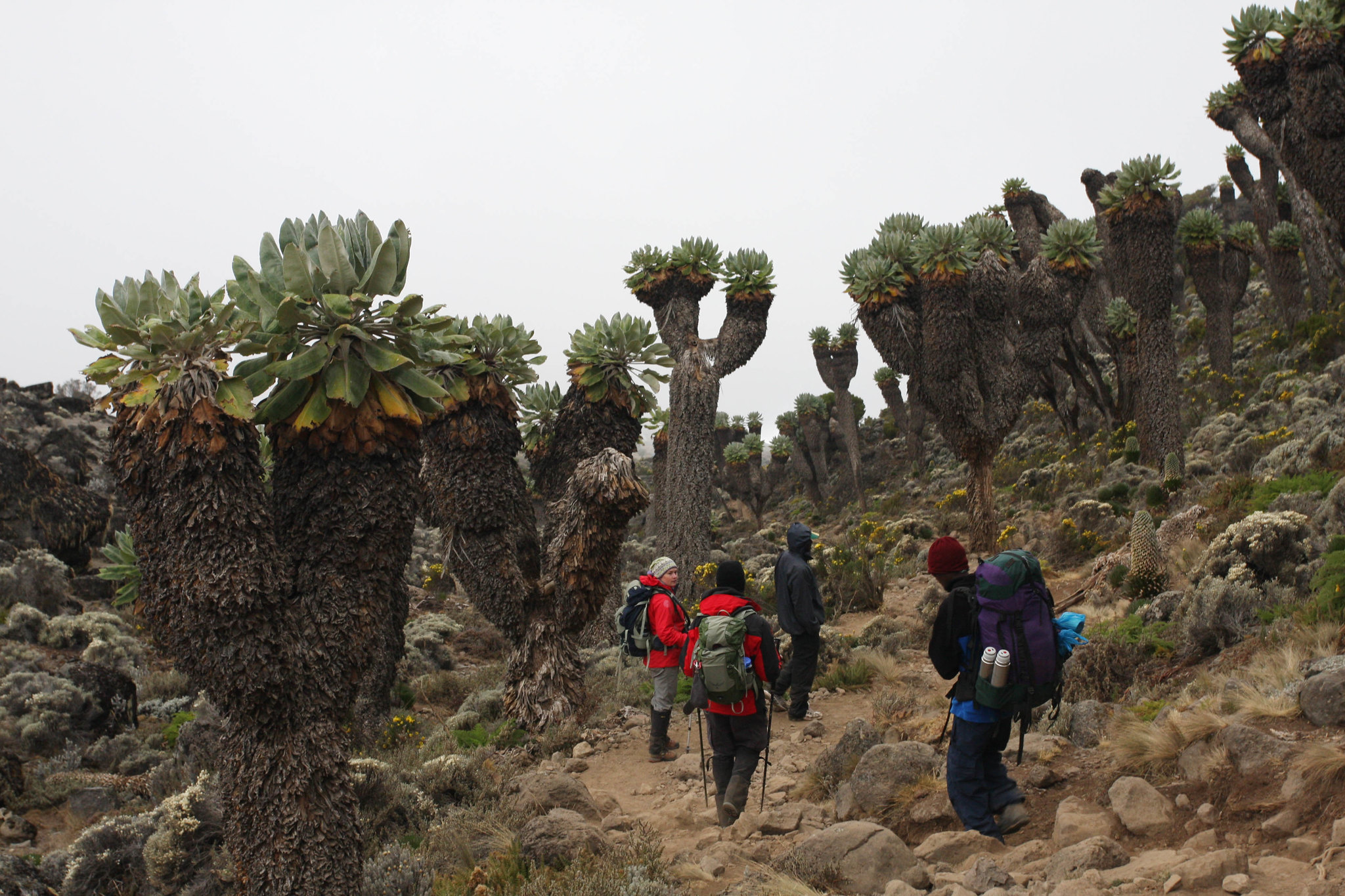
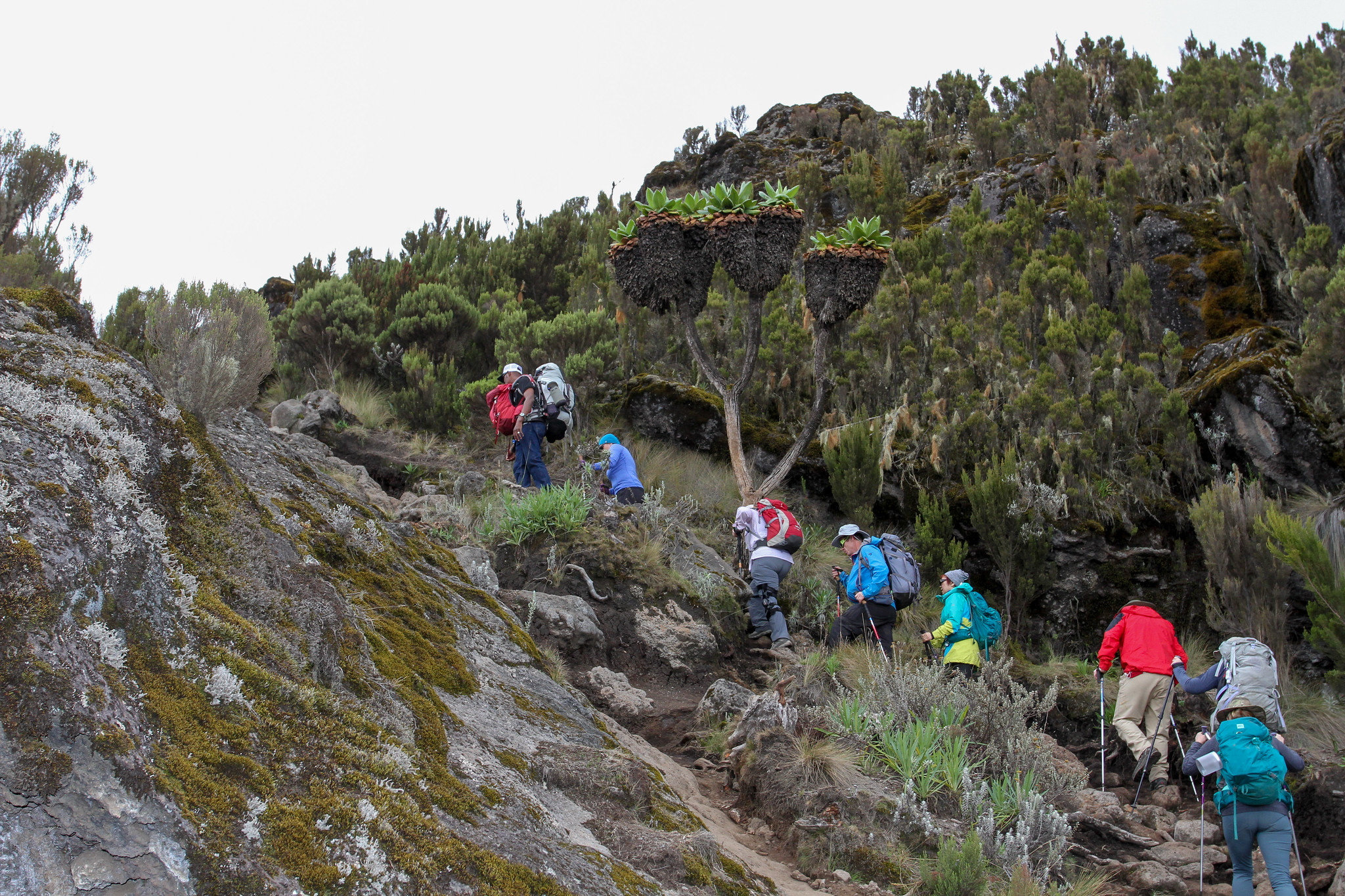
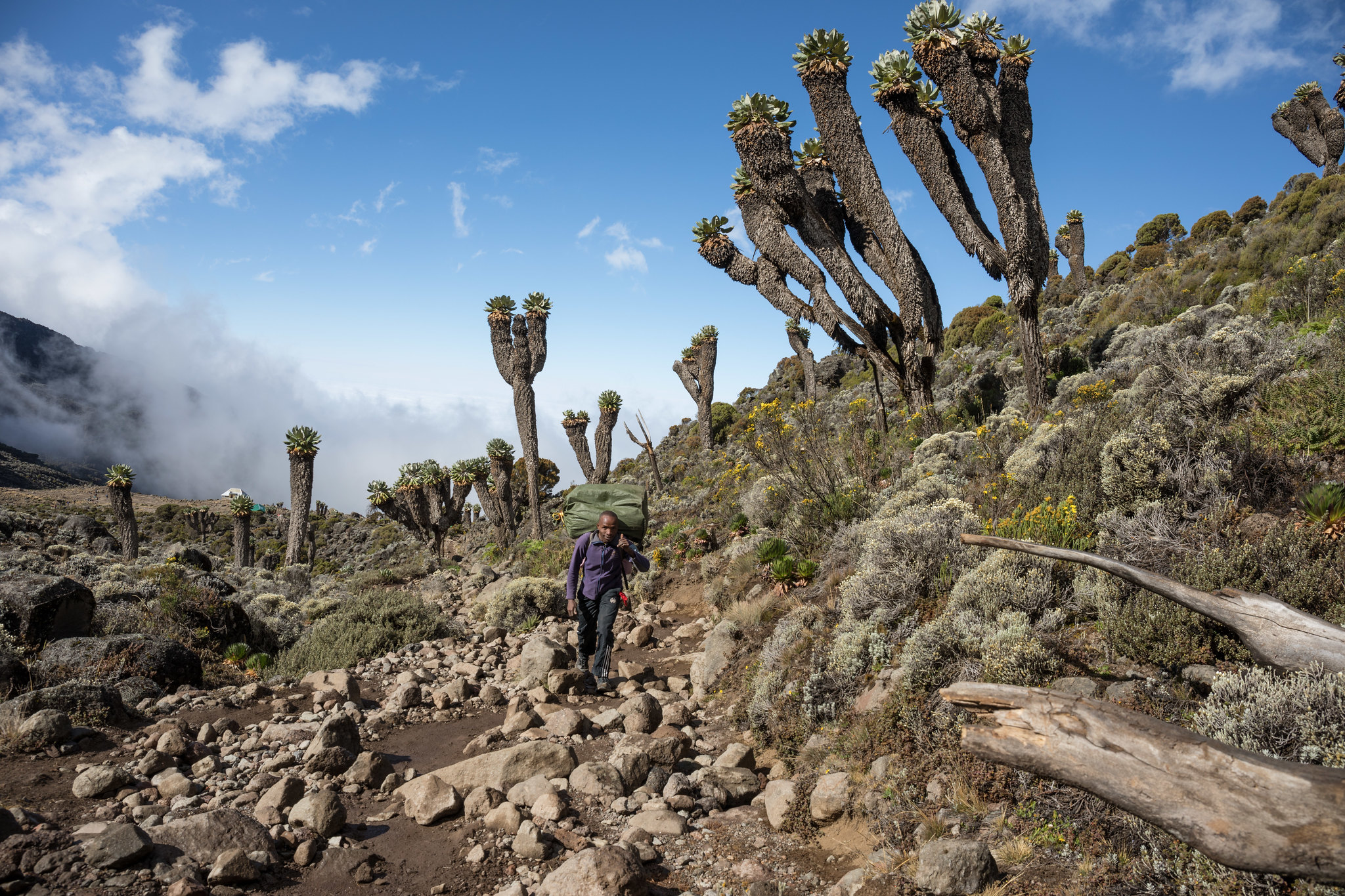
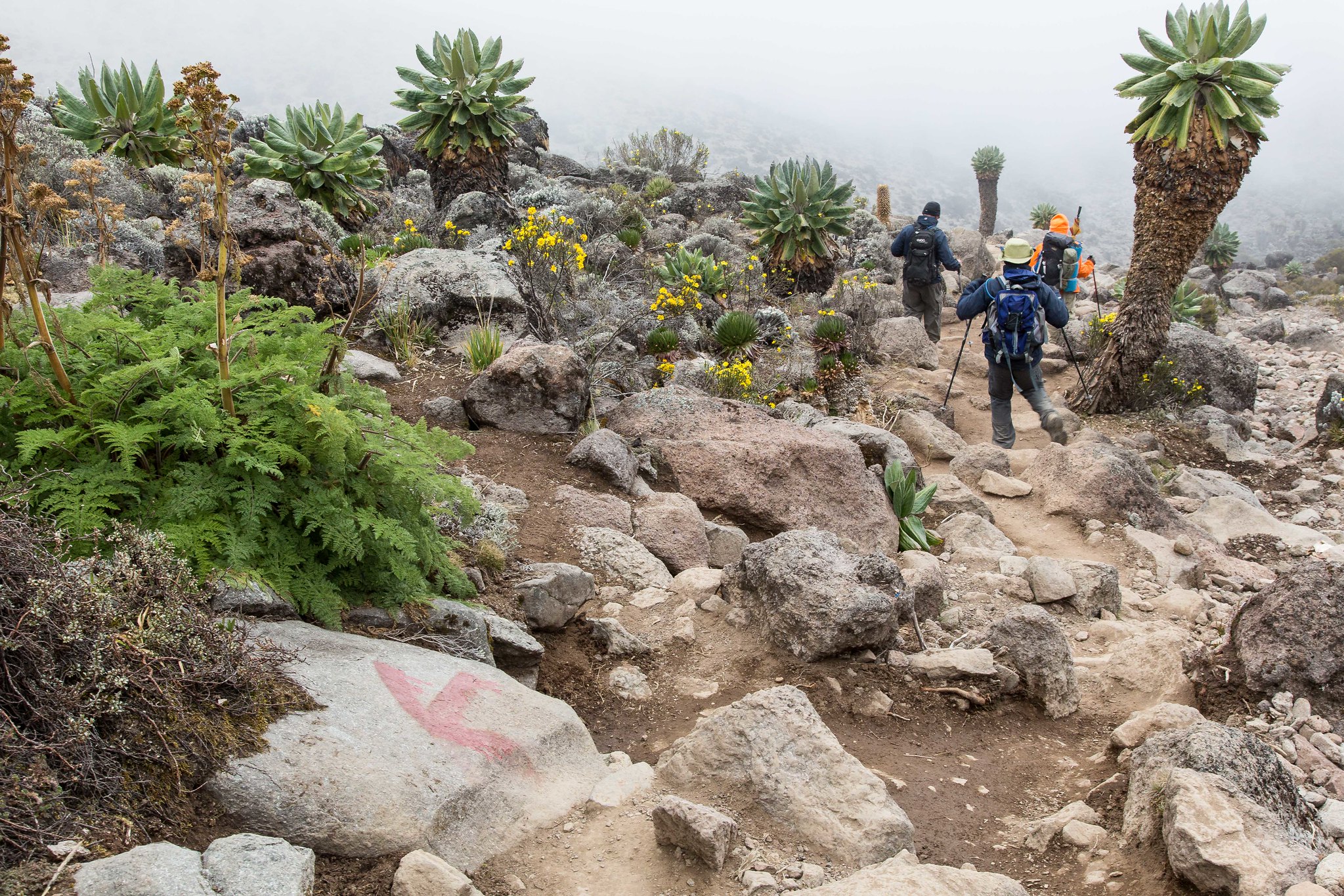
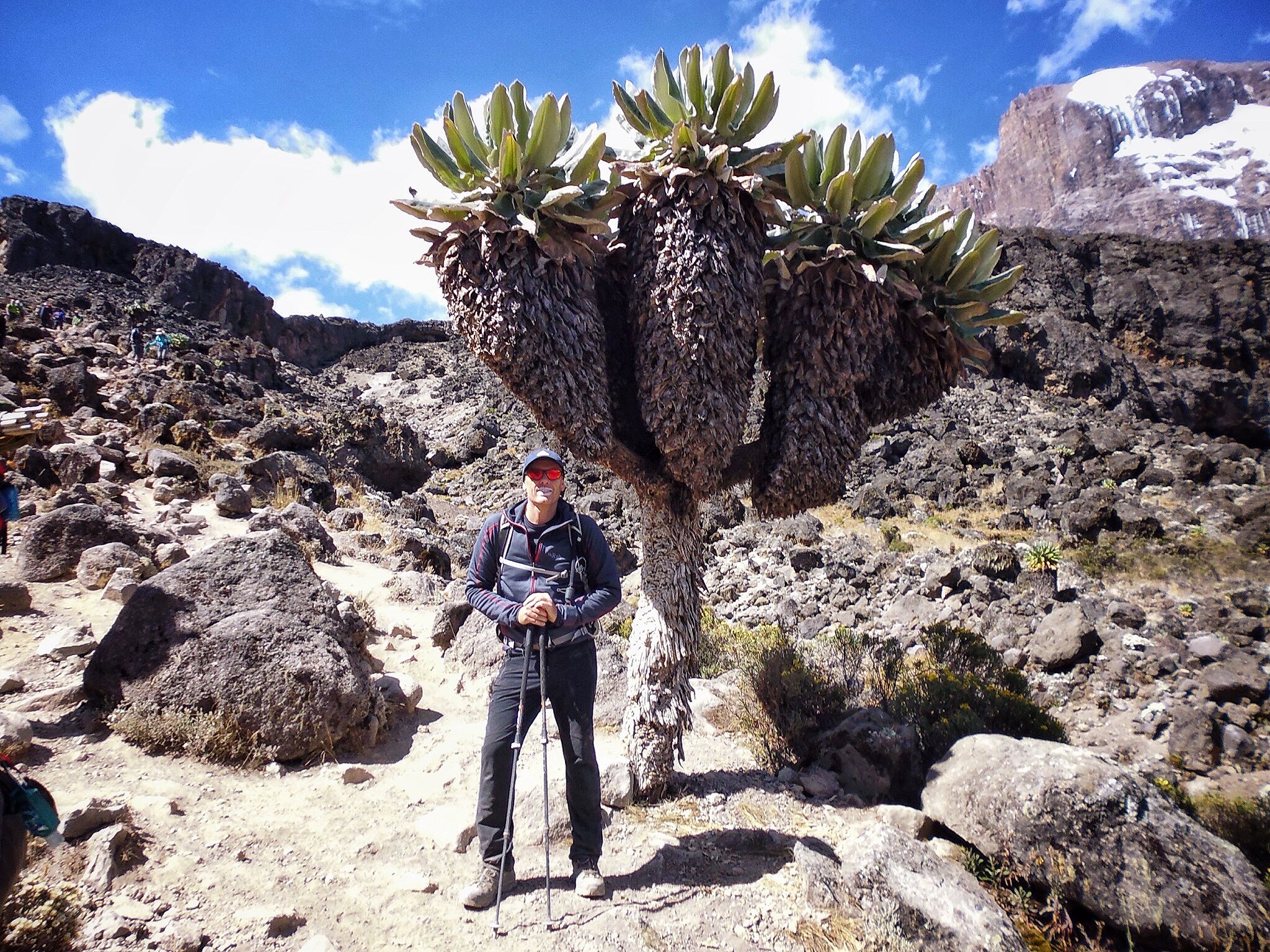
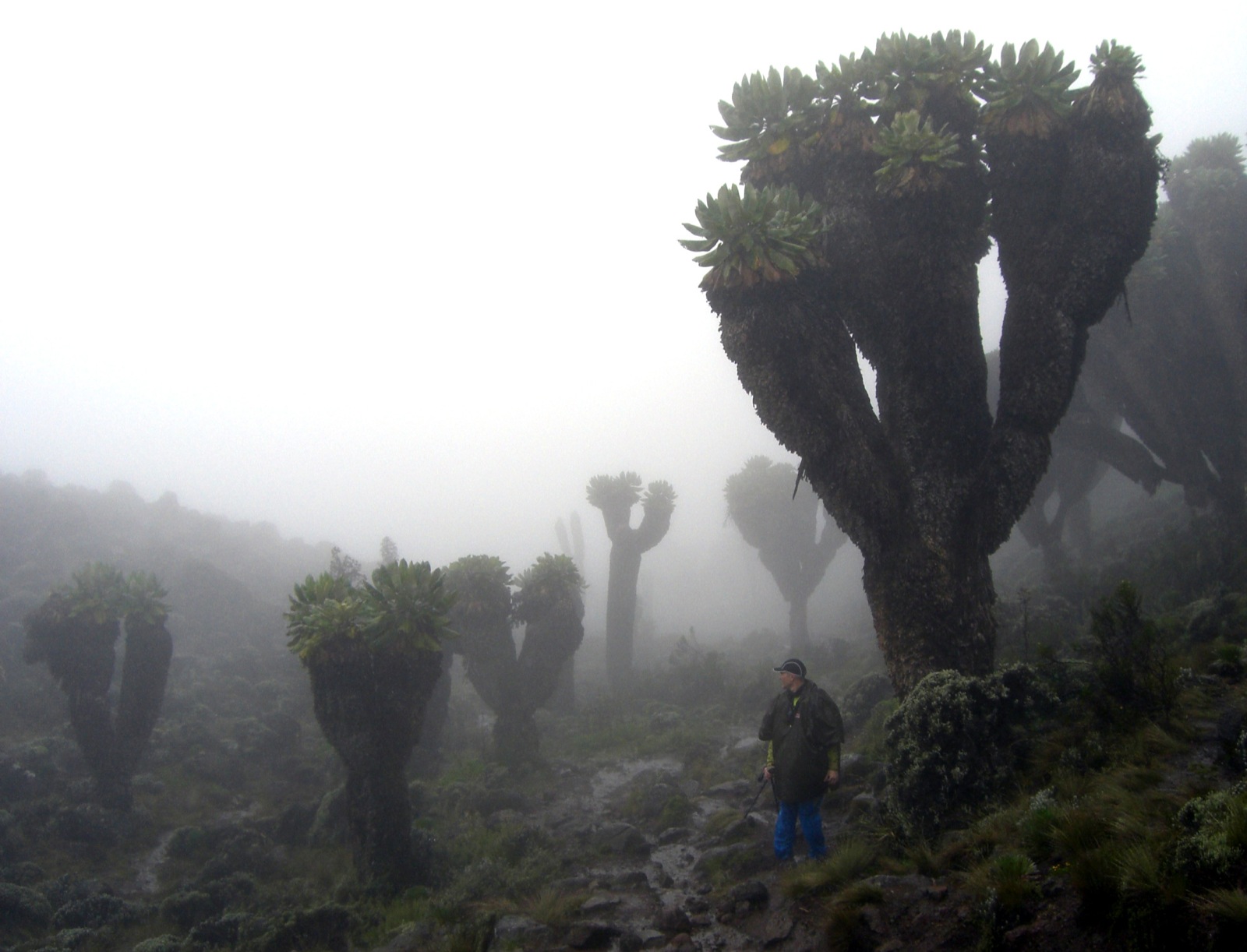
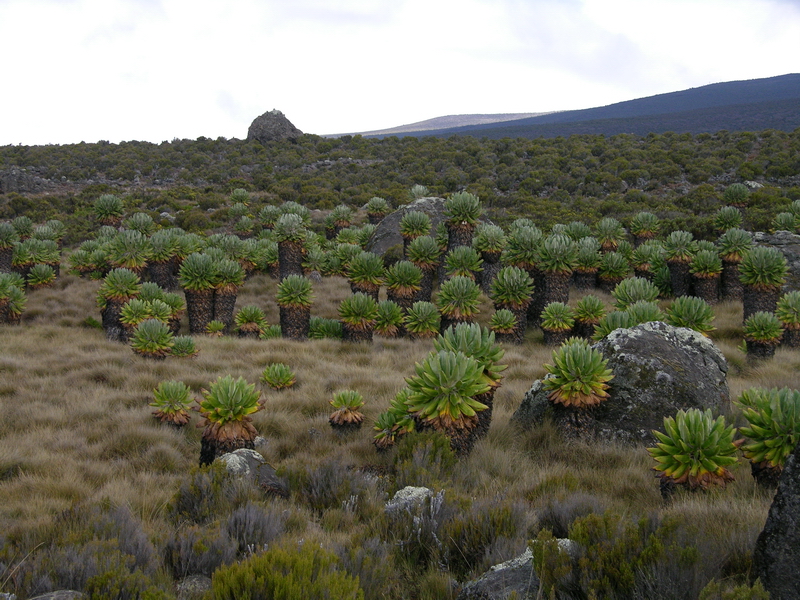
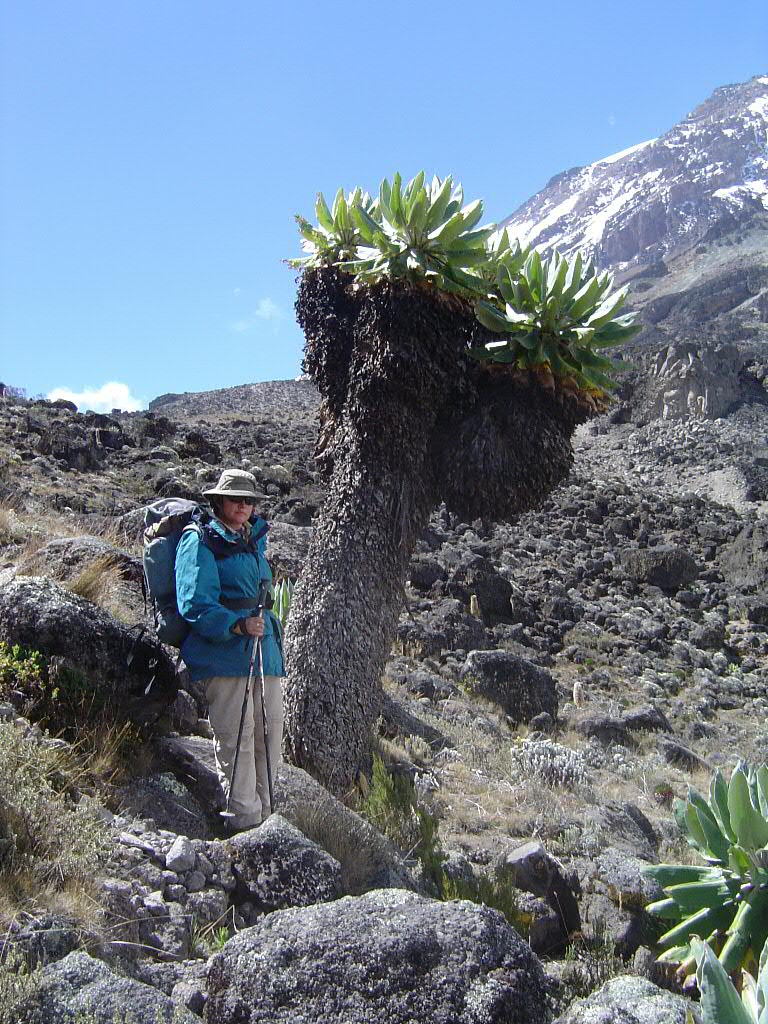
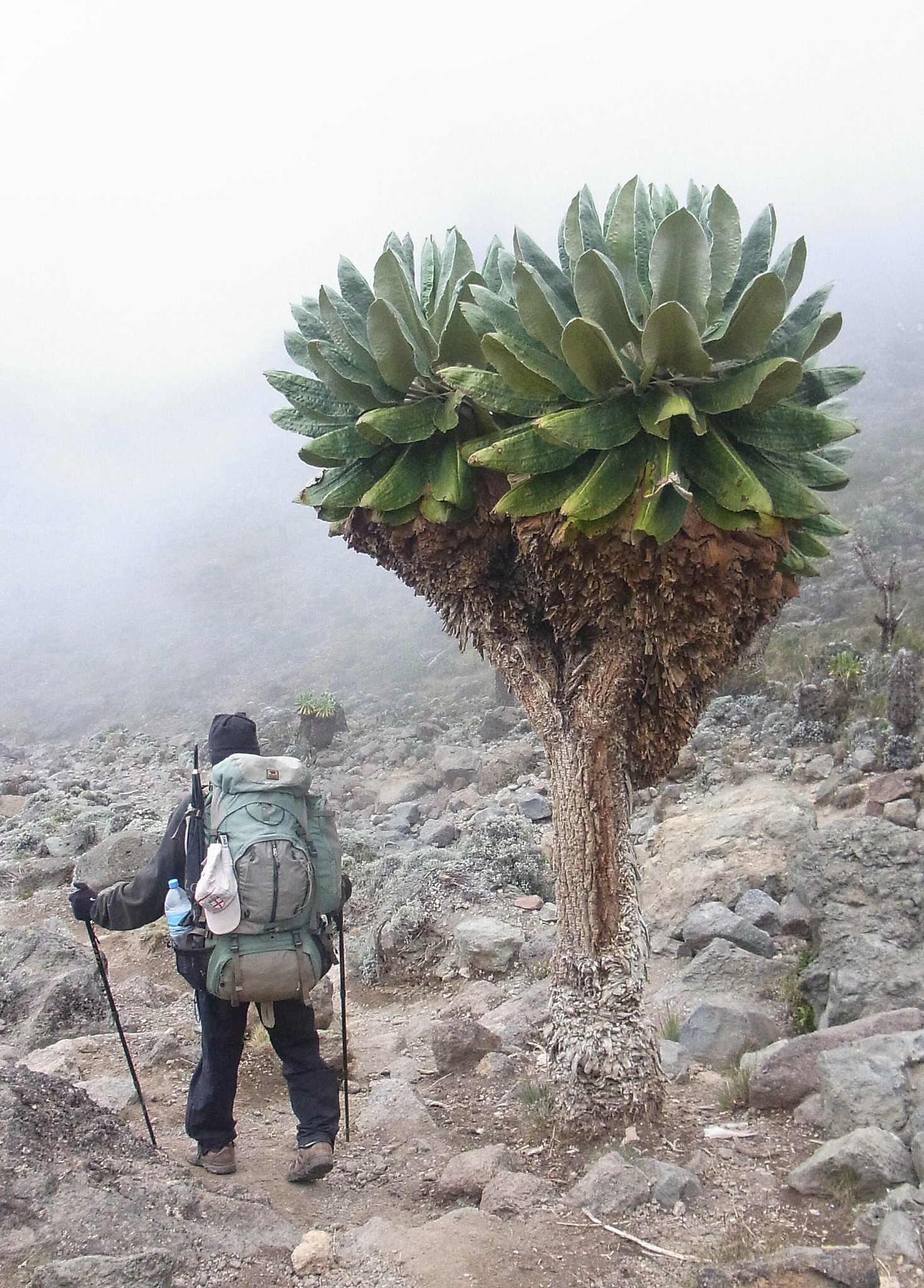
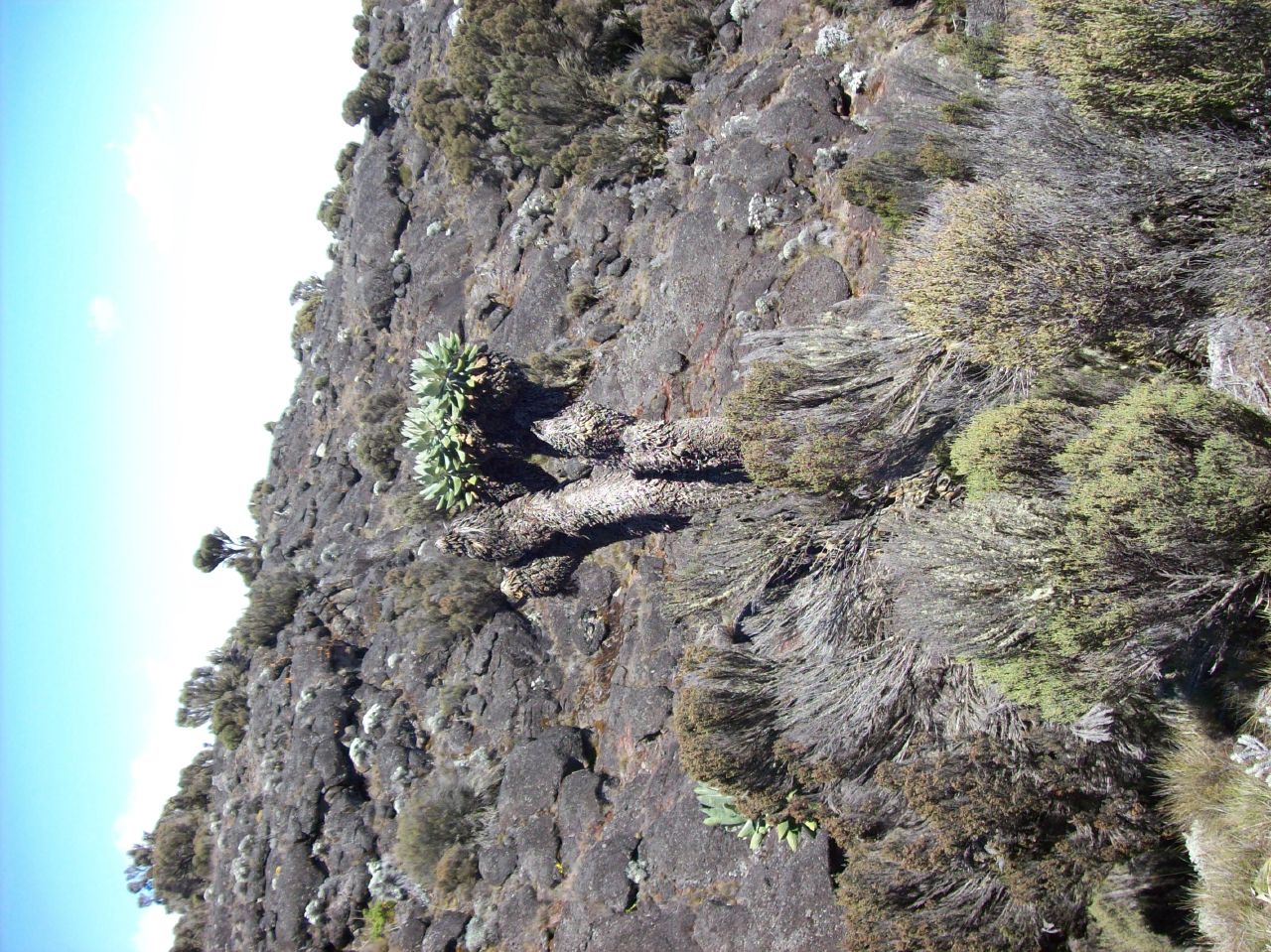
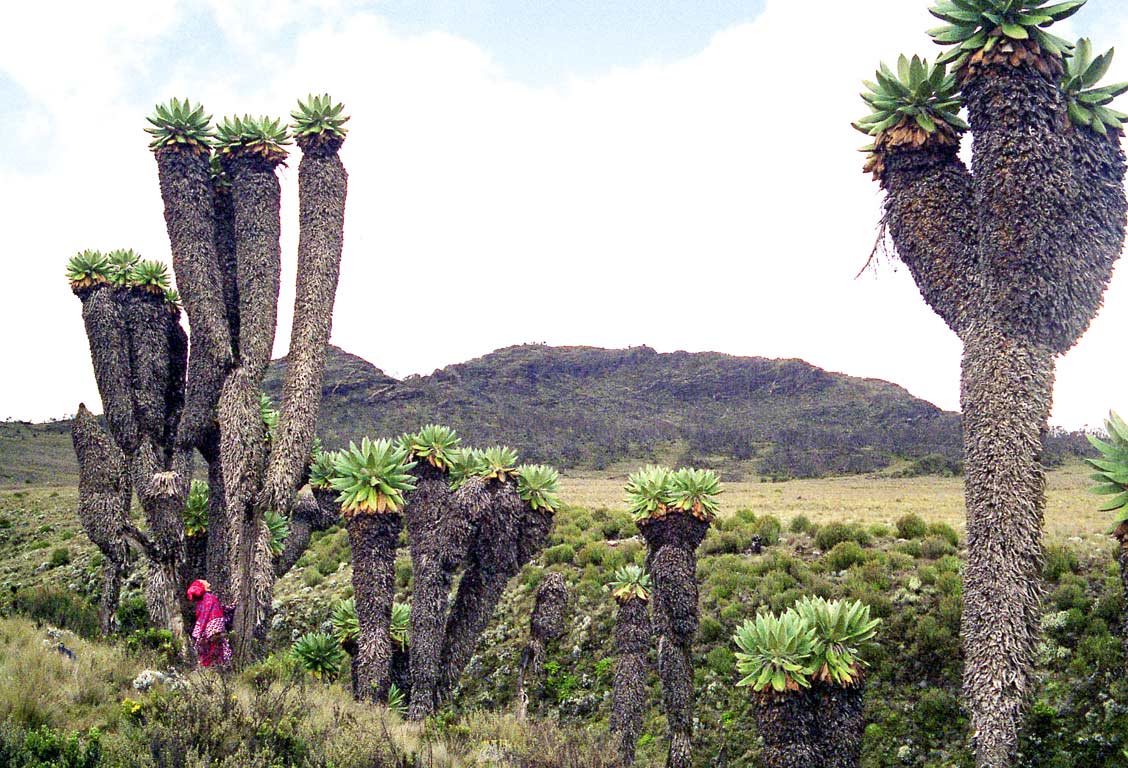
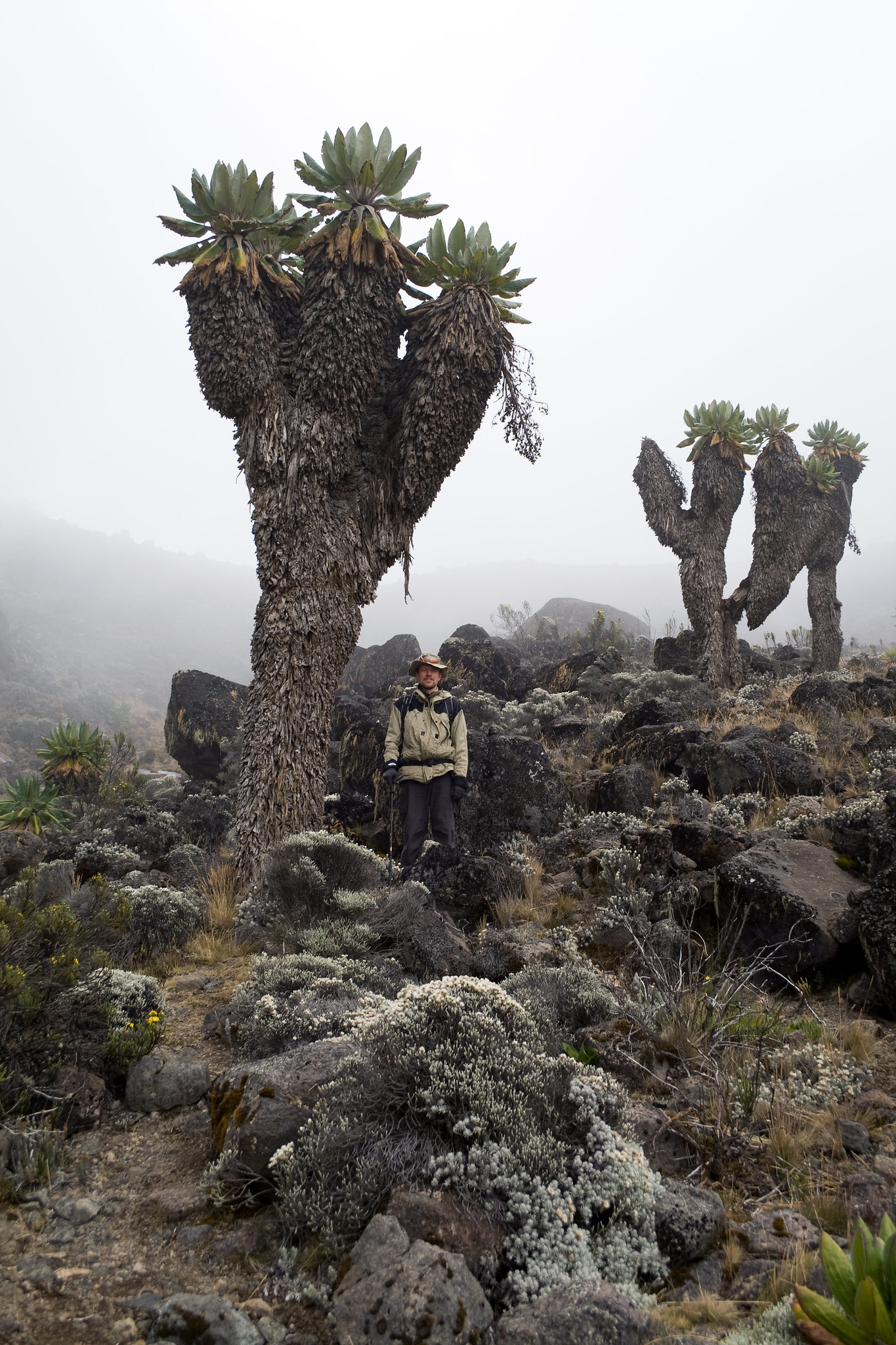
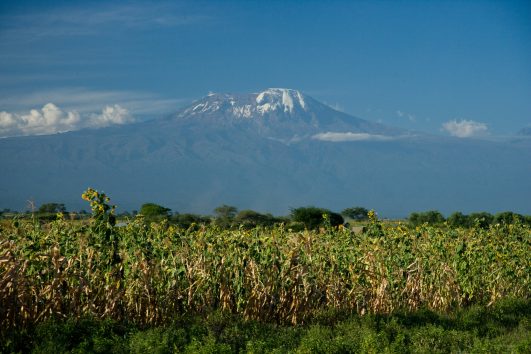
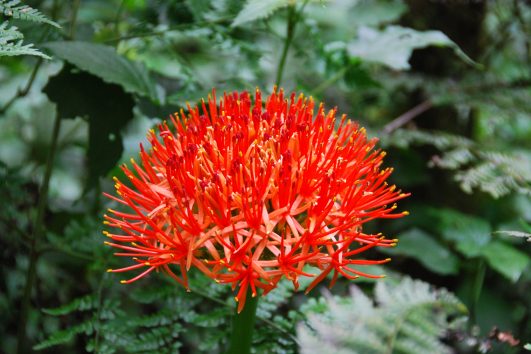
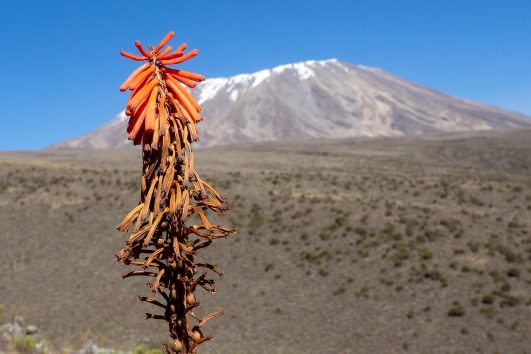
Tour Reviews
There are no reviews yet.
Leave a Review